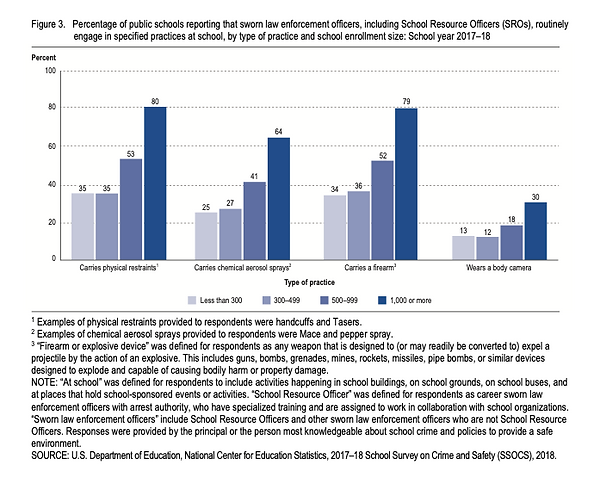
Where Are Prisons?
While prisons themselves may exist as one structural entity, there are many ways that police and prisons, and their focus on surveillance and punishment, emerge in a variety of structures that often go unnoticed.
Education Systems
The influence of prisons and policing can be found within the public school system if you look for it. Punishments such as detention, suspension and expulsion are all ways that the school system punishes children for misbehaving. They are also all techniques that isolate the student, take them away from their class and peers and promote ‘rehabilitation’. When educational punishment is examined alongside institutional penitentiary punishment it is easy to make the connection. This connection is strengthened when looking at who is being punished in schools. Black, Indigenous and youth of colour are disproportionately represented in public education disciplinary measures.
-
In 2016 Halifax Regional School Board reported that 22.5 per cent of the students it suspended were Black, though they made up only 7.8 per cent of the school population
-
In 2006–2007, the Toronto District School Board, the largest school board in the country, suspended Black students from junior kindergarten to grade six over three times more often than white students in the same grade.
The issue here lies not in the disproportionate violence against Black people within the school system, the issue is the white supremacist thinking that guides institutions such as prisons, schools etc. that is the target.
The education system’s resemblance to the prison system becomes even more obvious in schools that have security guards and police officers stationed within them. While this is not a new phenomenon, the increase of police presence, and authority, in these spaces has grown exponentially.
The concept of the ‘school resource officer’ emerged in the 1950s in Flint Michigan, United States of America in attempts to embed police officers into the community.
By 1975, 1 percent of schools in the United States reported having police officers. As of 2007, 40 percent of schools had police stationed in them.

Law enforcement is brought into schools under the pretense of keeping children safe, however, there has been little evidence of this. In fact, there is a tremendous amount of research pointing to the extensive harm that the implementation of police in schools causes students. Like formal policing, the punishment that these School Resource Officers distribute, often disproportionately affects Black, Indigenous, disabled and students of colour.
-
Students of color who are disabled have some of the highest rates of expulsion and suspension
-
Ward, now an undergraduate at a Chicago university, spoke about his experience at Orr High School. For the black and brown students at the school, Ward testified, Orr was “like we stepped into a prison”
-
The Newly Organized Coalition Opposing Police in Schools -- NO COPS—was founded in northwest Toronto in December 2008. One of its members, a high school student named Kabir Joshi-Vijayan, described the police-in-schools program as “another way to increase the harassment and targeting of marginalized people in the school”
In recent years an increasing number of policy makers, activists, academics, parents, students and educators, have begun to focus specifically on the relationship between the education system and imprisonment. They call this relationship the school-to-prison pipeline. The school to prison pipeline is fueled by education systems that place a greater emphasis on the discipline and control of Black children rather than on their development of knowledge. The result of this is high numbers of Black and Indigenous students being funnelled into the criminal justice system.